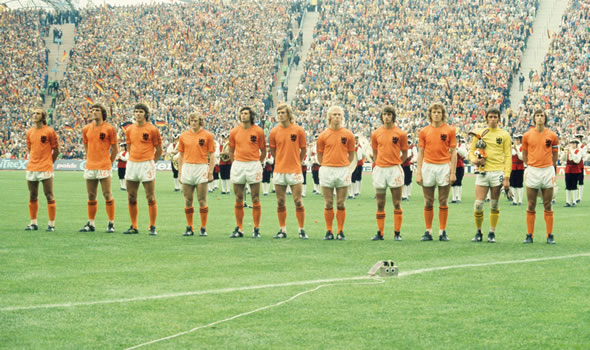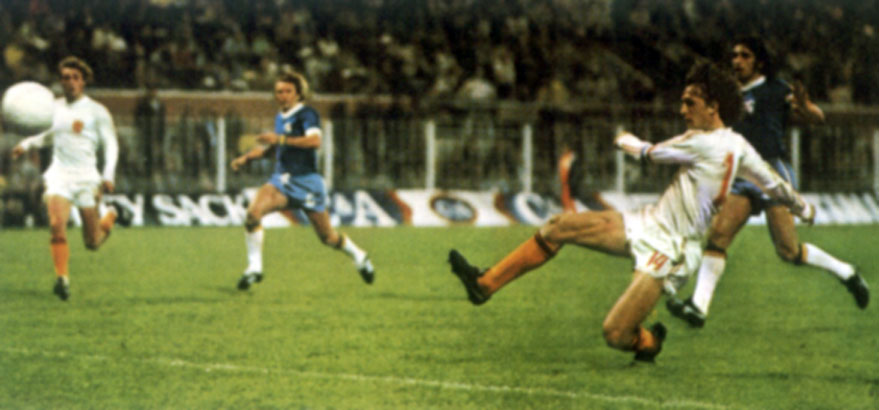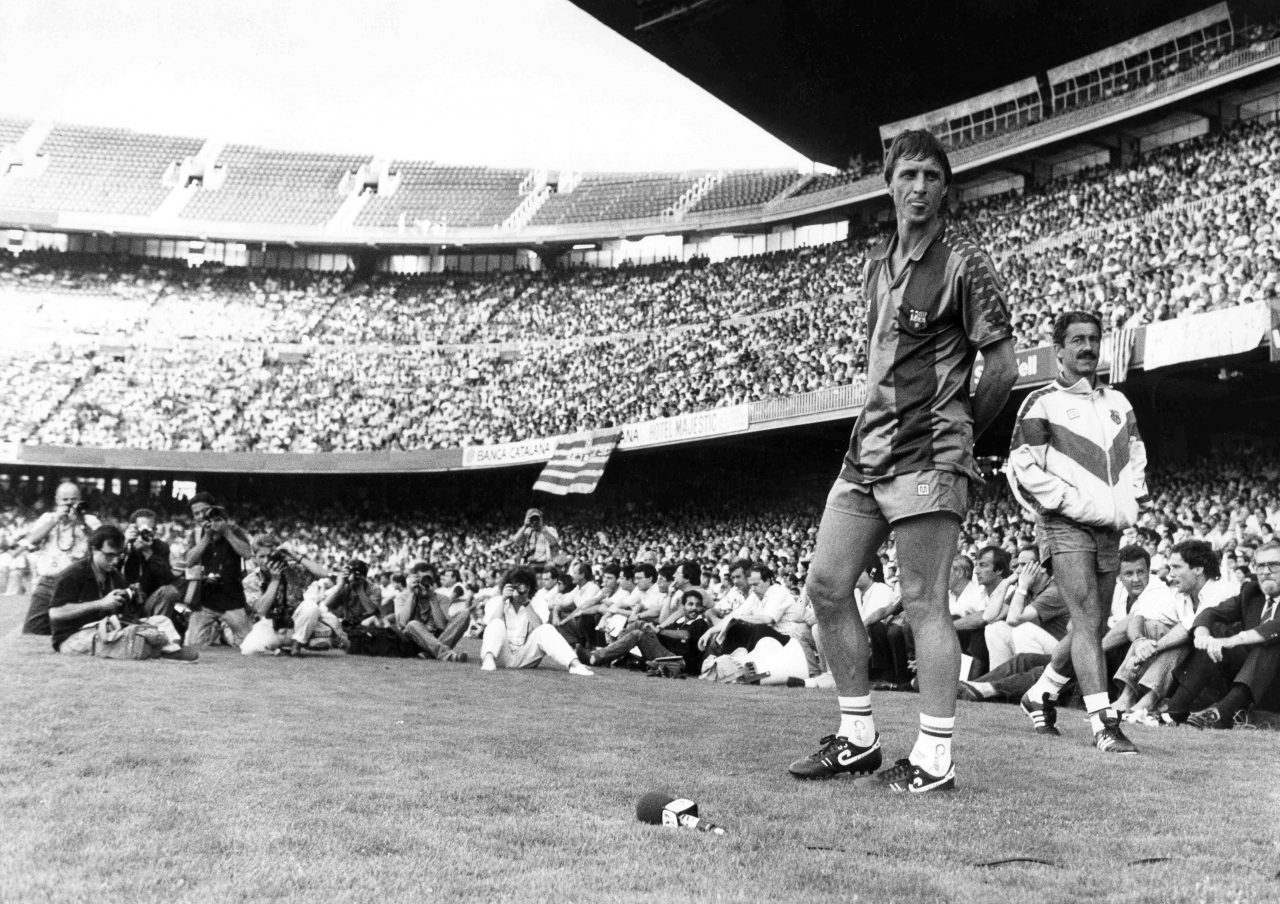Cruyff the creator
29 Mar 2016

One of the last true originals, Johan Cruyff died last week aged 68 in Barcelona. Rebellious, stylish and unique, the way Cruyff approached his craft carries lessons for anyone with a creative bone in their body.
Gaudi’s unfinished masterpiece, La Sagrada Familia, throws shadows out across rooftops and streets from its position at an underwhelming intersection in the Eixample area of Barcelona.
Despite a dominant presence on the city’s skyline, the cathedral creeps up on visitors and passers-by at pavement level. No grand reveal here. Yet the man behind this extravagant, unwieldy and truly original construction had unbending faith and vision. His creation would outlast time.
Like Gaudi before him, the Dutch footballer and coach Johan Cruyff brought artistry and spectacle to match anything the great architect could offer. And his legacy will match that of Gaudi, weaved as his influence is into the DNA of the Catalan capital.
Who Cruyff was
In the 1970s, Ajax of Amsterdam were the finest team in Europe, with a series of victories in the Dutch league and 3 consecutive European Cup triumphs.
They won gloriously, but also beautifully and their creative director was Johan Cruyff. An upright, dashing winger with spindly legs but always graceful in his movement, Cruyff wasn’t just an exceptional player. He was a one-off in almost every respect.
A chain smoker amongst the clean(ish)-living, outspoken with his words but rarely empty with a message, Cruyff did his talking both on and off the pitch.
Some moments are quintessentially his and his alone. A move that won him global fame and left Swedish defender Jan Olsson facing the wrong way, heading into the abyss as Cruyff glided into the space behind him.
What Cruyff leaves behind
Johan Cruyff’s legacy is immeasurably rich, both in the world of football and further afield. Here’s a few things to ponder on.
How you get there matters as much as the destination
Cruyff once said the world remembers the Dutch team of World Cup 1974 more than the side that beat them in the final, West Germany.
Why?
Because en-route to the final, the Dutch team had created something beautiful. It wasn’t just about that end result for Cruyff and co. Getting there and doing it the right way mattered hugely to the man from Amsterdam. Make it great and they will remember you.
But before the glory, came the guts.
Holland very nearly didn’t make it to the World Cup of 1974 at all. They had stumbled and grumbled their way to the finals. But once there, once they had reached that point, their lessons were learnt. They stepped up and became the real thing once the tournament began, going down in history as one of football’s greatest ever teams.

Stop, collaborate and listen
Even for someone with Johan Cruyff’s talent and force-of-nature personality, he was a team player. He couldn’t do it alone.
And when he found coach Rinus Michels, he was in the company of a man able to transform the overall context in which Cruyff played. Total Football was born. Holland’s epochal 1974 side supported Cruyff creative trailblazing with the defensive organisation of Ruud Krol, the scheming strategies of Johan Neeskens and the quirky style of Johnny Rep.
They were players who shared some of Cruyff’s inventive intentions, who could bring their own abilities to the parts of the Total Football project it fell to them to complete. With Cruyff an undoubted conductor, the wider symphony came together and the end product was some of the most memorable football ever played.

Create something to last
“Johan Cruyff painted the chapel, and Barcelona coaches since merely restore or improve it” - Pep Guardiola
Once Cruyff’s playing days were over, he coached firstly at Ajax where he honed his style. And much like in his playing days, he was a true inventor.
His Ajax team featured a unique tactical shape that saw them to success domestically and abroad until he left for Barcelona in 1988. So rich was his legacy that, when Ajax won the European Cup in 1995, they did so using Cruyff’s tactical blueprint down to the letter.
It was back by the Mediterranean, however, where Cruyff moved himself and football to a different level. He took what he had learnt and built in Amsterdam and displayed it, refined it and perfected it on a larger canvas over his 8 years at the helm of FC Barcelona.

Cruyff also had to fulfil the mantra that FC Barcelona is “més que un club” - more than just a club. Substance needed to match the style. Here Cruyff understood the need to create something to leave behind.
With his direction, the club re-purposed La Masia, the training club’s training centre. It became the beating heart of the football that Barcelona play. Here the next generation of Cruyffs learn the Barça way, with creativity built into their bones and their brains electrified by the club's footballing philosophy.
Barcelona's first teams have followed in Cruyff’s creative direction - and won everything there is to win. The teams led by Josep Guardiola and now by Luis Enrique have been labelled the best club teams to have played the game. And there is no finer graduate of La Masia than Lionel Messi, one of the greatest ever footballers.
All this and more because Johan Cruyff believed in himself and in doing simple things, beautifully.
Farewell, maestro.


Please login to comment.
Comments